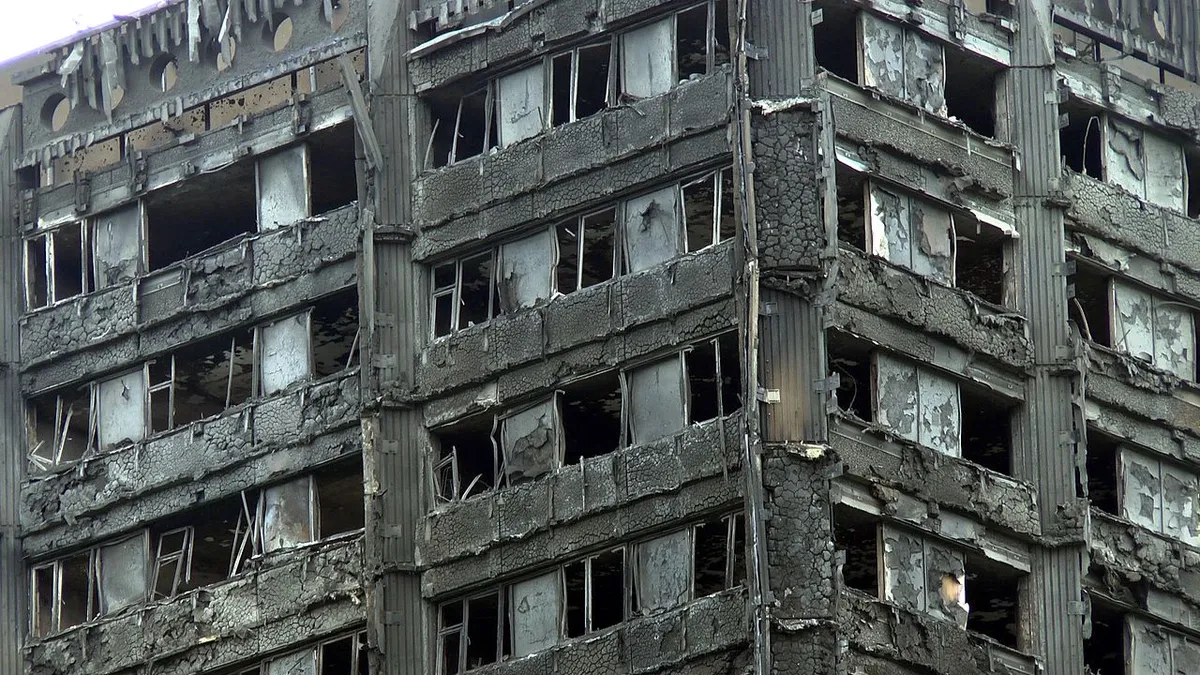Dive Brief:
-
Survivors of 2017's Grenfell Tower fire in London, along with the families of the 71 victims who died in the blaze, have sued material and product suppliers in a U.S. state court in Philadelphia, the Associated Press reported, alleging that their products helped spread the fire.
-
The lawsuit, which has 250 plaintiffs, names Whirlpool, cladding manufacturer Arconic Inc. and insulation maker Celotex as defendants. It was a Whirlpool refrigerator that allegedly started the fire, although the company said investigations have found no defects with that particular model. Plaintiffs have accused Arconic and Celotex of supplying material that helped spread the fire so quickly. The lawsuit also alleges that the burning insulation released cyanide gas that killed several of those inside the building and injured more.
-
The insulation and cladding used on the Grenfell structure have been taken off the market. The lawsuit, which will rely on a jury to determine damages, is expected to take at least two years to go to trial.
Dive Insight:
Grenfell had undergone a substantial renovation in the years leading up to the fire, and, according to a BRE Global report on the fire, the pre-renovation makeup of the exterior would have been able to better withstand the fire. In its study, BRE also determined that while the cladding and insulation were both combustible, workers did not abide by building codes and safety measures while carrying out the rehab. Cavity barriers were supposedly so poorly installed that they created a path for the blaze instead of preventing it from spreading. Material stuffed into window frame gaps and missing door closers also allegedly contributed to the spread of the fire.
The Grenfell Tower was also not outfitted with a sprinkler system, which is common in many high-rise buildings constructed before their local building codes required such safety systems. In New York City, however, many high-rises have been made safer by a regulation that requires building owners to install fire sprinkler systems in existing buildings.
Effective July 1, owners of New York City office buildings taller than 100 feet are supposed to be complete with the retrofitting of automatic sprinkler systems. The only exceptions are historical landmarks or if the building's structure cannot accommodate such a system. In those cases, building owners may be required to institute other fire protection measures to make up for a lack of sprinklers.
New York City enacted the retrofit requirement in 2004, giving owners 15 years to complete the installations.












